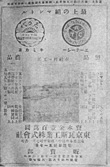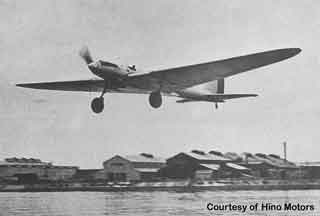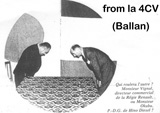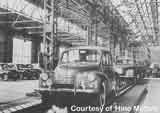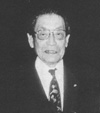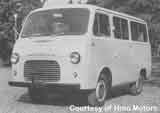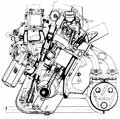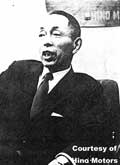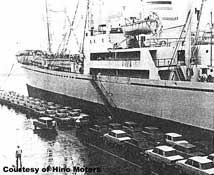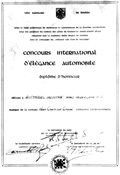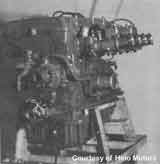 |
|||||||||||||||||||||
|
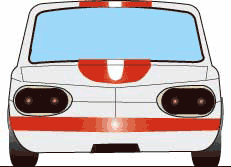 |
||||||||||||||||||||
|
|
*****
|
||||||||||||||||||||||||||||||||||||||||||||||||||||||||
|
The descent of Hino to Hino Contessa 1300 : From eyes of enthusiast
|
||||||||||||||||||||||||||||||||||||||||||||||||||||||||
|
***
<Splendid Car Guys> A site owner chose big four people in a glance of enthusiast. They are neither the founders nor owner. As the management, they always led the field, namely marketing & sales, engineering, and production, then gave energy to Contessa day and night in there. Mr. Hoshiko learned aviation engineering and walked around Europe and America, and he learned evolution of aviation industry and the automotive industry deeply. Then, he was invited by T.G.E. Mr. Hoshiko preached necessity of the automotive industry so that Japan became a modern nation. In T.G.E, a mass production of a small car designed for the middle classes was the heart's desire not the car which kept company with a rich person. In 2010, he was admitted to the Japan Automobile Hall of Fame : Establishing the foundation of Japan's automotive industrye. Mr. Yamoto (at the era of Contessa; an executive director) inherited tHoshi-ism with skin. and took revival of the postwar Japanese automotive industry. Then, he did a technical acquisition & manufacturing technique of Renault as well as development of a full-size commercial vehicle in Hino. He put a hand in clay with designers from own in a design of Hino Commerce and Hino Contessa 900 and made an en effort for element technology development & implementation of production in the production spot. Then, Hino Contessa 1300 withdrawal decision right became heartrending grief for him again inlcuding an employee. Mr. Uchida ran around the world with "the car which can be exported the excellent car" and "liberalizing trade is an opportunity to expand export" with Contessa named by him. He made an agreement to sell 1,000 Hino Contessa 900 in Hong Kong and continued an effort and also promoted KD production aggressively. He also was very knowledgeable person to a sports car, and he extended his dream that Hino manufacture Contessa 900 Sprint in Italy, then sell it in Europe and North America market. Thereafter, he completed Hino 1300 GT with Alpine of Dieppe in Normandie, France. Styling was a copy of Contessa 900 Sprint, but Chassis was re-develped by Alpine with Plastic Body and Engine was TOHC by Alpine based on Hino GR100.Those activities were in process concurrently before Hino release Hino Contessa 1300 Sedan to the market. Dr. Suzuki did parting from Renault engine for Contessa 1300, then for domestic engine technology establishment, he challenged newly-designed GR100 engine. n addition, he became a member of Team Samurai, and through engine development for competitions in U.S.A. in particular, he contributed to feedback to commercial contessa of Japan side. After Contessa withdrawal, He devoted to new technology development of a diesel engine, then became the world first person. In 2001, he was admitted to the Japan Automobile Hall of Fame : Pioneering and leadership of the advanced technology & engineering about ending for automotive. From a situation of an auditor, Mr. Miyako was able to advance by fusion to a certain history European and American car original culture for business of Hino. It does not push forward production of merely cars and export because it spread Hino Contessa in the world. He acted as Chairperson of race committee and was concerned with motor sports positively. At first he rolled up Erik Carlsson and did an entry of a Safari Rally. Then, He bound a hand together with Mr. Peter Brock which was an advanced designer of those days in U.S.A. and planned success in U.S.A. race and sale as well as domestic competition. He was precious existence to know the world of an international business and automotive race with real practice in Japan in those days. Furthermore, as for Mr. Miyako, the race withdrawal back of Hino did great aid for the making of relation from a favor to BRE (Brock Racing Enterprises) to Toyota Motor Corp and Nissan Motor Corp. Nissan Motor in U.S.A. made a way for race activity of Datsun Fairlady with Bob Sharp of the East Coast in those days. However, it was not a visible result. Mr. Miyako introduced BRE to Nissan Motor of Japan side. As a result, Japanese Nissan directly sent a vehicle & race part to BRE, then BRE fought against much comeptitors including U.S. Nissan and Bob Sharp team based on support of Nissan's Japan side. As a result, it was laid a legend of a Fairlady. As a result, it became birth in a legend of Z-car based on the sucsess of Fiarlady and 510 sedan. It may be said that a result of Nissan car by BRE at race field was not born without Mr. Miyako, and we must not forget that a shadow has such history in a legend of Z-car. You also must not forget an inheritance in the form that DNA of this BRE is clear for race activity of 300ZX era (from the later half of 1980 through the first halt of 1990) if add one more thing. They (All photography except Mr. Hoshiko at 1993) did not merely sell a car in pursuit of QCD (Quality, cost, and Delivery) on hardware side of the making goods, and they were "Car Guys" of precious world level in Japanese automotive industry who knew the software side that was original pleasure of real use of car. In addition, after Contessa withdrawal, design engineer of the YE28 engine mentioned in the above moved to Honda and contributed the experience for Honda's many engines including F1 competition engines. The boa * stroke ratio of Honda 1300 accords with this Hino's YE28. Should we regard it as a simple coincidence? ** |
||||||||||||||||||||||||||||||||||||||||||||||||||||||||
|
iSE) |
||||||||||||||||||||||||||||||||||||||||||||||||||||||||
|
*****
|
||||||||||||||||||||||||||||||||||||||||||||||||||||||||
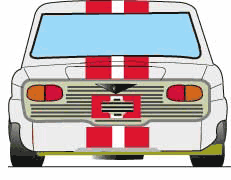 |
|||
